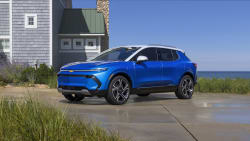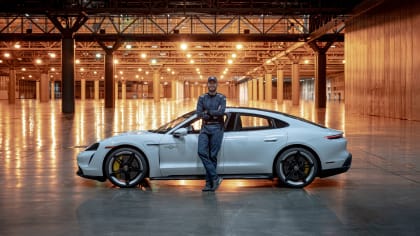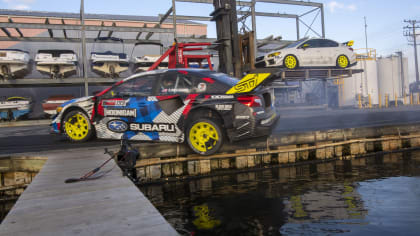Future Innovations in Windshield Repair Technology

AI to the rescue here too?
Learn about the technology that’s currently key to windshield repair and discover how future innovations might improve this important automotive service.
By The Editors
Thu, Oct 30, 2025 06:10 AM PST
Featured image by Max Tokarev.
When you think about technology as it relates to automobiles and auto body repair, you probably don’t consider windshield repair. Maybe you think of electric vehicles (EVs) or advanced driver assistance systems (ADAS). And when thinking of collision repair, you may imagine scans that reveal frame misalignments or software that interacts with onboard computer systems for diagnostic purposes.
In short, "windshield repair” and “technology” aren’t two terms that go together naturally for many people. But maybe they should? There have been several significant technological advancements in windshield manufacturing and repair in recent decades. Let’s look at the technology involved in windshield repair and forecast what the future might hold for this type of automotive service.
The importance of windshield repair
The auto body repair industry and auto manufacturers have invested a lot in windshield repair technology. Why have they done this? Because there are major benefits to be had by speeding up windshield repair, for both collision repair shops and for individual drivers. Furthermore, the better the technology, the more windshield repairs an auto body repair shop can make, as opposed to simply replacing the windshield.
Windshield repair is a business, and auto body shops want to make money, so it makes sense they want to improve their processes. But as it pertains to windshield repair, the investment in technology goes beyond that. Automakers, government agencies, and safety advocates all want more drivers to understand the danger of cracks and chips in auto glass.
Traditionally, drivers only go for windshield repair services when there’s a large crack, an imperfection in their sightline, or a complete shattering. But this is dangerous. Tiny chips and cracks can grow suddenly. It’s possible to have what seems like a tiny chip in the corner of your windshield for three weeks and then one morning you get into your car and discover that chip has grown into a startling spiderweb of cracks.
When cracks spread like this, they not only imperil your visibility, they compromise the structural integrity of the glass. One errant stone can fly up from the road and completely shatter a weakened windshield. So, not only is it easier (and often cheaper) to repair a windshield as soon as you notice a chip or crack, it’s also much safer. The last thing you want is for it to shatter while you’re driving, and the longer you wait, the more that becomes a possibility.
Windshield repair technology
If you go to an auto body repair shop today, what technology will they utilize when repairing your windshield? They might use:
Heated repair tools
Collision repair professionals use heating tools to gently warm the glass around a chip or crack. They do this for two reasons:
- Heating expands the damaged area slightly so the repair resin can flow in more easily,
- and it drives out any trapped moisture that could interfere with bonding.
Heat can also prevent stress cracks from spreading during the repair process. Technicians must carefully control the temperature, since overheating can cause further damage or distort the laminated glass layers.
Windshield repair resins
Technicians use specially engineered adhesives that mimic the refractive index and strength of automotive glass. Different viscosities are available to repair different types of damage, such as thinner resins for long cracks and thicker ones for bullseye or star-shaped chips. Once injected, the resin bonds the broken glass together and restores structural integrity. After curing with ultraviolet light, the resin becomes clear and durable, significantly improving visibility while preventing the damage from spreading.
Resin injection systems
Injection systems typically feature a bridge-mounted injector to deliver the resin into the damaged spot. The injector applies controlled pressure, ensuring the resin fills even the smallest cracks within the laminated glass layers. This process stabilizes the windshield and reduces the visibility of the damage. Modern injection systems are designed for precision, making the repair both strong and cosmetically clean.
Vacuum and pressure repair tools
Windshield repair technicians use tools that alternate between suction and pressure to remove air bubbles from the damaged area and draw resin deep into the cracks. The vacuum phase pulls out trapped air and moisture, while the pressure phase forces resin into every crevice.
Collision repair technicians may repeat this cycle several times to achieve a complete fill. By ensuring there are no voids left inside the damage, these tools greatly improve the strength and clarity of the repair compared to simple resin application.
What does the future hold for windshield repair?
Many of the tools and techniques mentioned above have been innovated or improved upon this century. This shows that windshield repair is still an evolving process. Let’s look at some of the newest innovations that may become more commonplace soon:
- AI-powered damage detection: Using cameras and image recognition, AI software can quickly analyze chips and cracks to determine whether they’re repairable or if a full windshield replacement is required. This improves accuracy and reduces human error in decision-making.
- Augmented reality (AR) repair guidance: Some auto body repair companies are experimenting with AR tools that overlay digital guides on the windshield for technicians, helping them position injectors more precisely and follow step-by-step repair processes.
- Smart resins with nanotechnology: While still experimental, research is underway into resins enhanced with nanoparticles, which could deliver stronger adhesion, better optical clarity, and improved resistance to UV degradation.
- Integrated vehicle sensors for damage reporting: As vehicles become “smarter”, some prototypes are exploring windshield sensors that can detect sudden impacts (such as rock strikes) and notify the driver before cracks spread.
- Robotics and automation: For larger fleet or manufacturing environments, robotic repair systems might carry out resin injection and curing with high precision and consistency.
However auto body repair technology evolves, one thing’s for sure: windshield repair services will continue to be key to safety.






